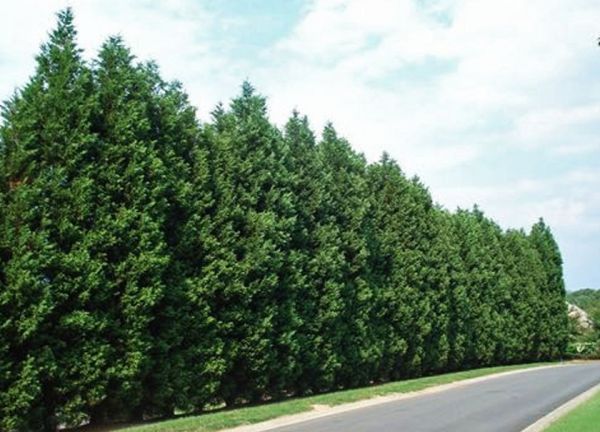Pros and Cons of Leyland Cypress Trees: A Comprehensive Guide

Exploring the Pros and Cons of Leyland Cypress Trees
Are you considering Leyland Cypress trees (x Cupressocyparis leylandii) for your landscape? Before making a decision, it's crucial to understand the pros and cons associated with these popular evergreen trees. In this comprehensive guide, we'll delve into the advantages of their rapid growth, dense foliage, and adaptability, as well as potential drawbacks such as size limitations, weak limbs, and shallow roots.
Pros of Leyland Cypress Trees
Rapid Growth for Quick Privacy
One of the notable benefits of Leyland Cypress trees is their rapid growth rate. If you're seeking a natural privacy screen or windbreak, these trees can quickly establish themselves, providing the desired coverage in a relatively short period.
Dense Foliage for Privacy and Aesthetics
Leyland Cypress trees boast dense foliage that forms an effective privacy barrier once they mature. Their thick green foliage not only shields your property from unwanted views but also acts as a noise buffer. Additionally, the evergreen nature of these trees ensures year-round beauty and color in your landscape.
Low Maintenance Requirements
If you prefer a low-maintenance landscaping option, Leyland Cypress trees fit the bill. They generally have good resistance to pests and diseases, reducing the need for frequent interventions. Once established, they require minimal maintenance, allowing you to enjoy their beauty without extensive upkeep.
Cons of Leyland Cypress Trees
Consideration of Size Limitations
It's important to carefully consider the mature size of Leyland Cypress trees. These trees can reach significant heights and widths, which may pose challenges if you have limited space or if they are planted too close to structures. Planning their placement accordingly is crucial to avoid future issues.
Due to their rapid growth rate, Leyland Cypress trees may require ongoing management to prevent overgrowth. Regular pruning and trimming are essential to control their size and maintain their desired shape. Campbell's Tree Service can help!
Potential Weak Limbs
Leyland Cypress trees can have branches that are susceptible to breakage during storms or heavy snow loads. Regular pruning is necessary to maintain a balanced structure and remove deadwood, reducing the risk of limb failure and potential damage to your property.
Shallow Root System Considerations
One factor to keep in mind is that Leyland Cypress trees have shallow root systems. This can make them prone to uprooting in high winds or when the soil becomes saturated. To prevent potential damage, it's advisable to plant them away from buildings and structures.
Conclusion
Weighing the Pros and Cons of Leyland Cypress Trees
Choosing Leyland Cypress trees for your landscape entails weighing the advantages and disadvantages they offer. Consider their rapid growth, dense foliage, and adaptability. For help selecting the right plants for your space, and maintaining them, give Campbell's Tree Service a call today!
